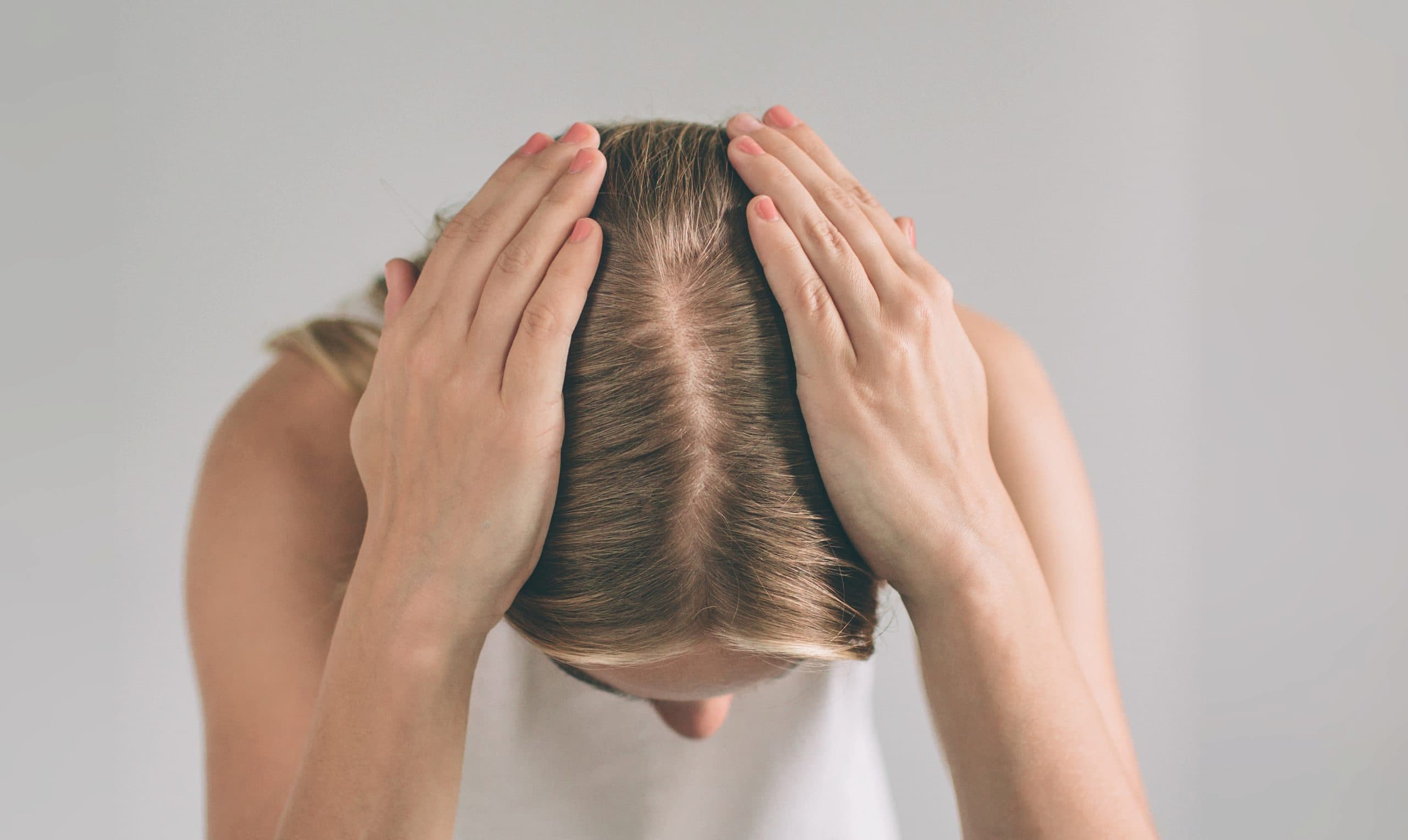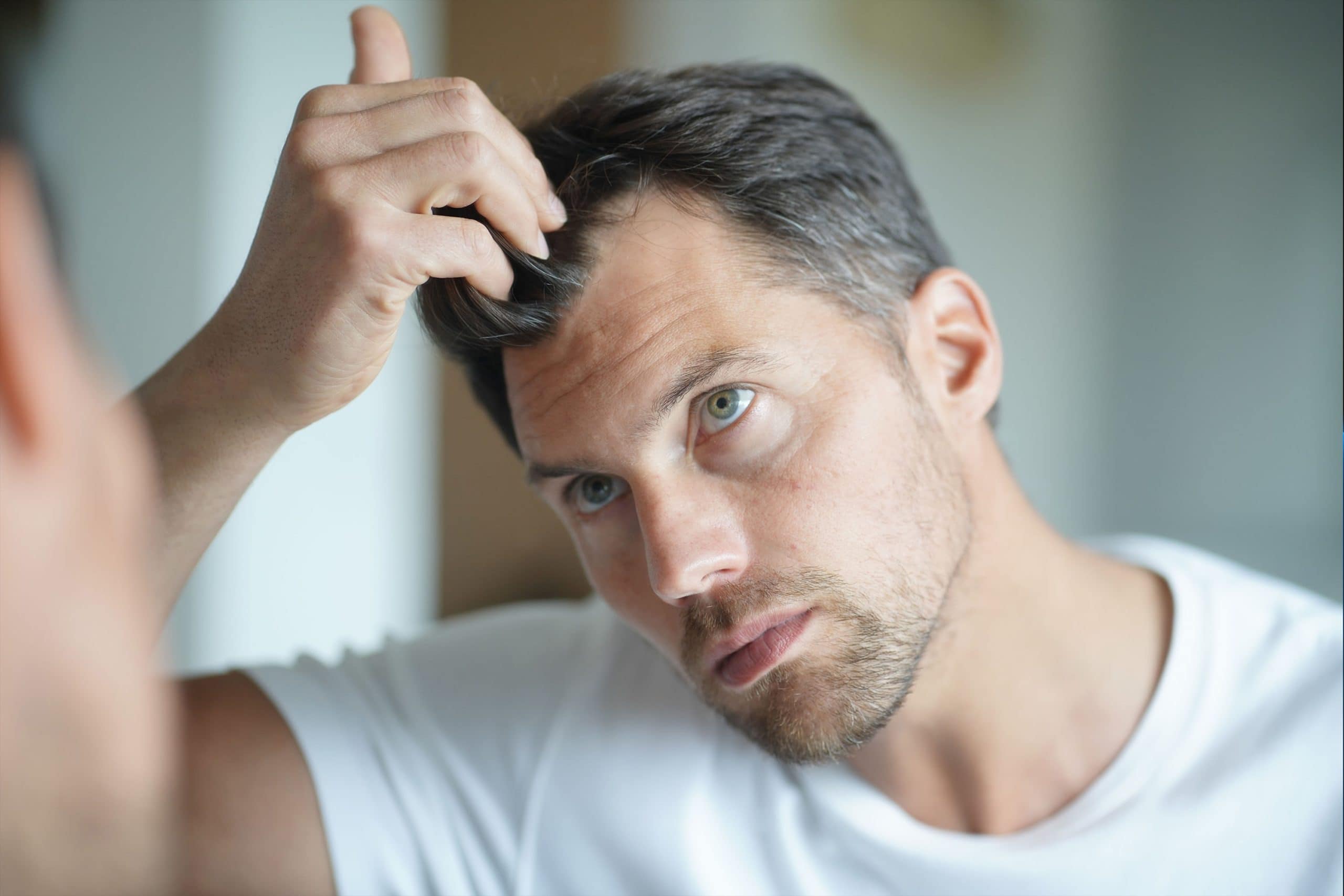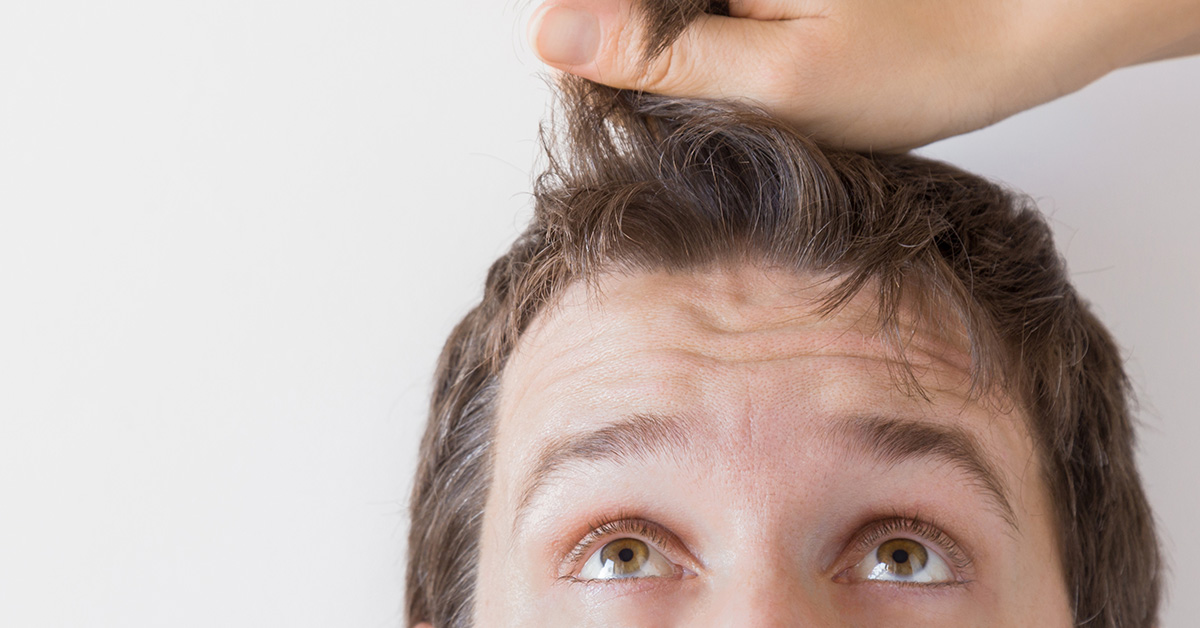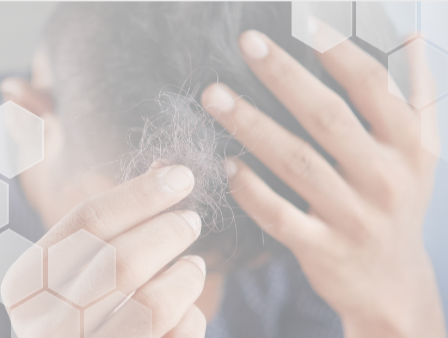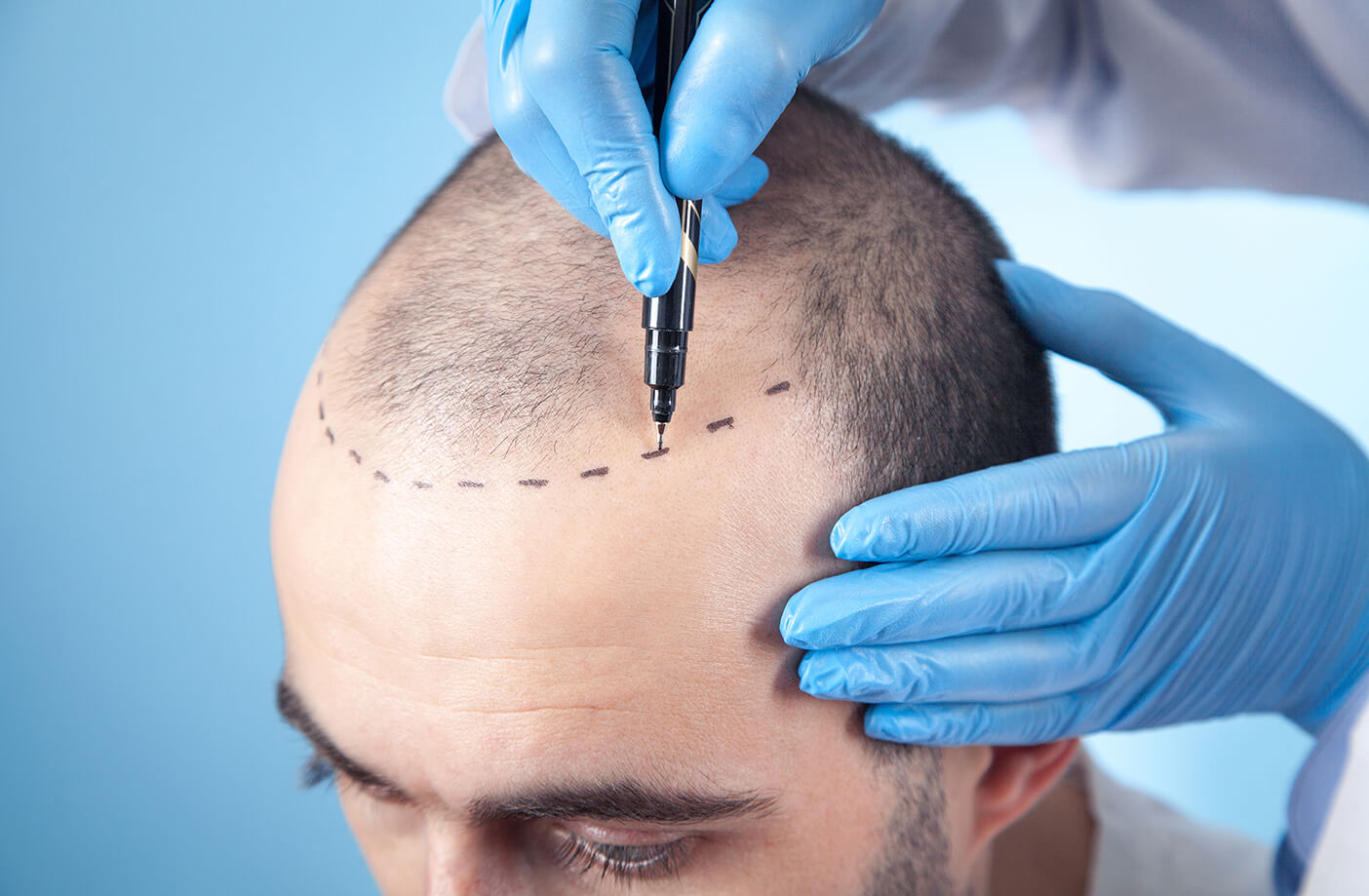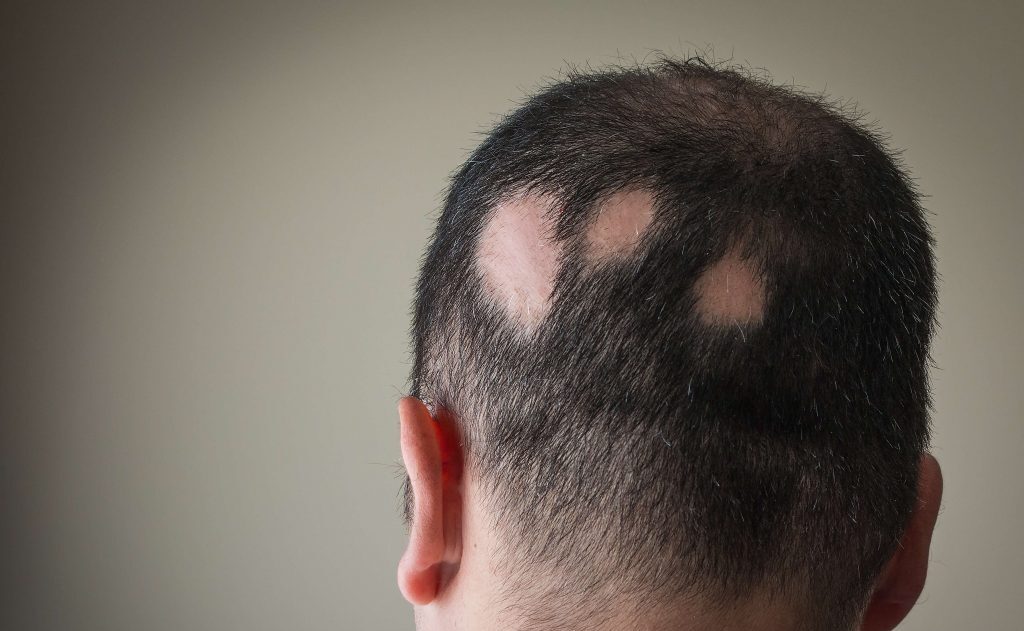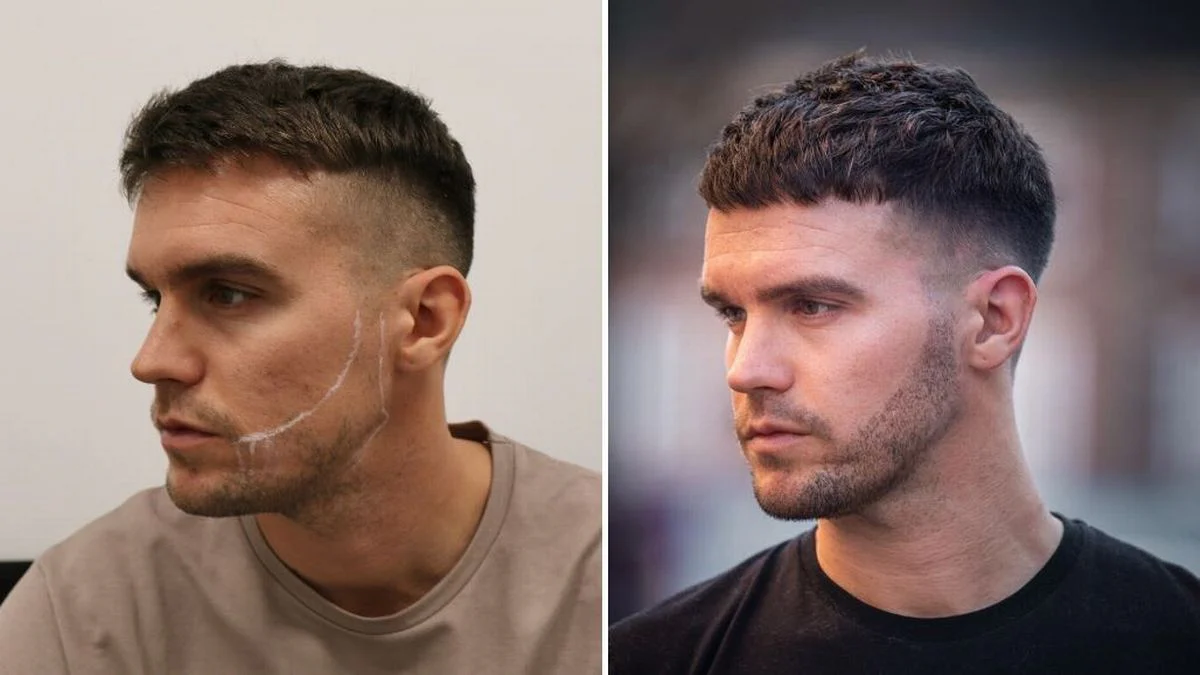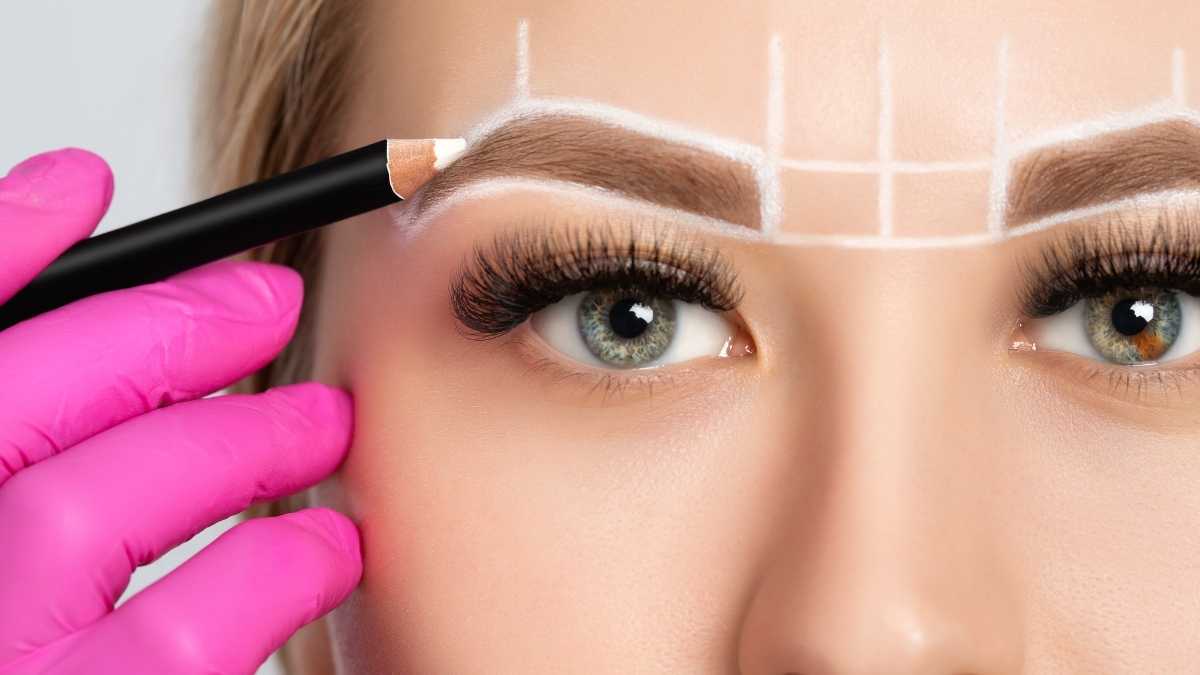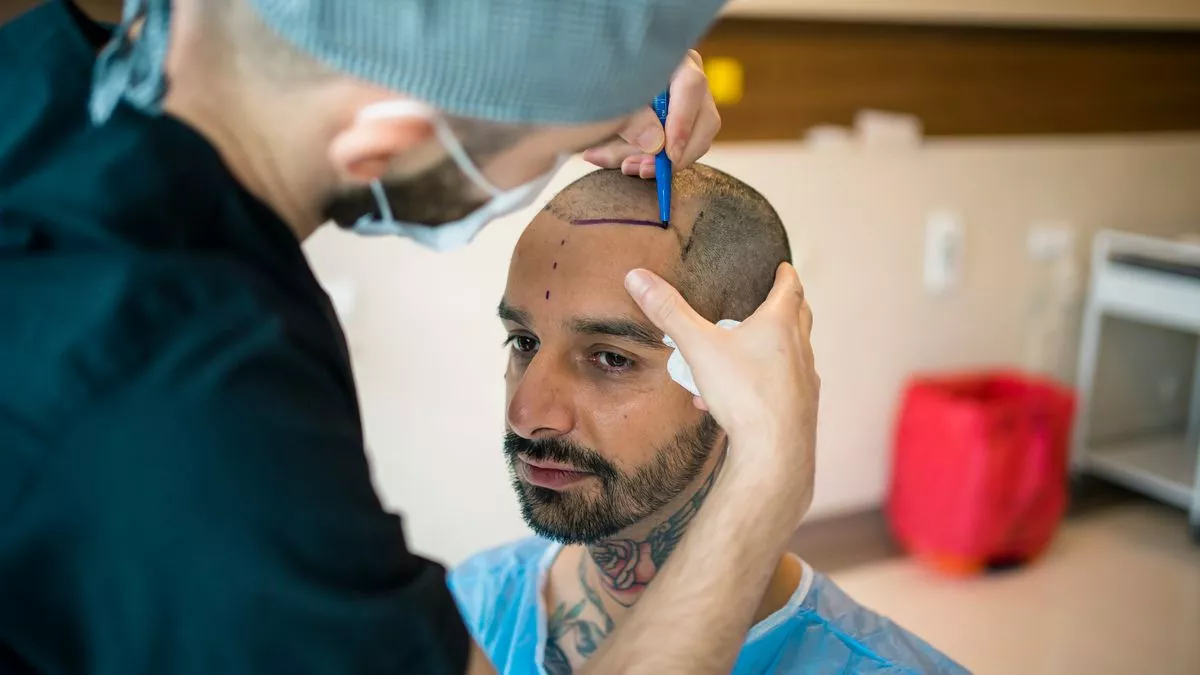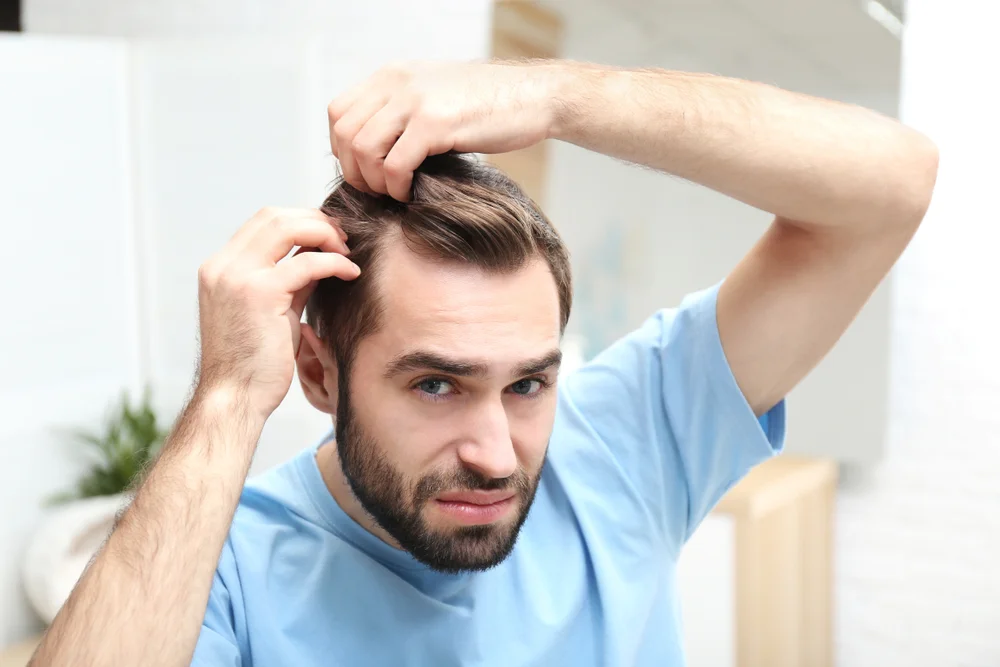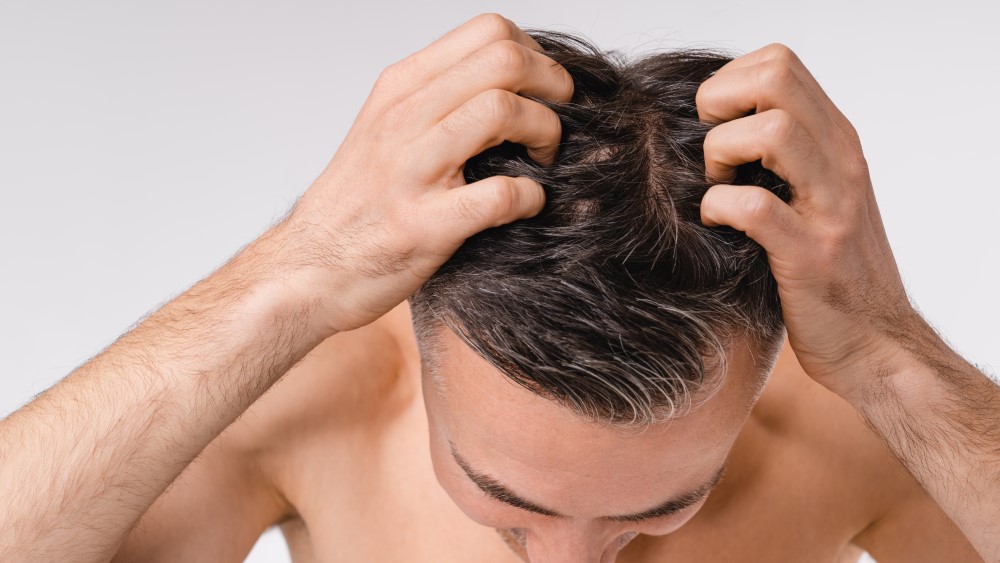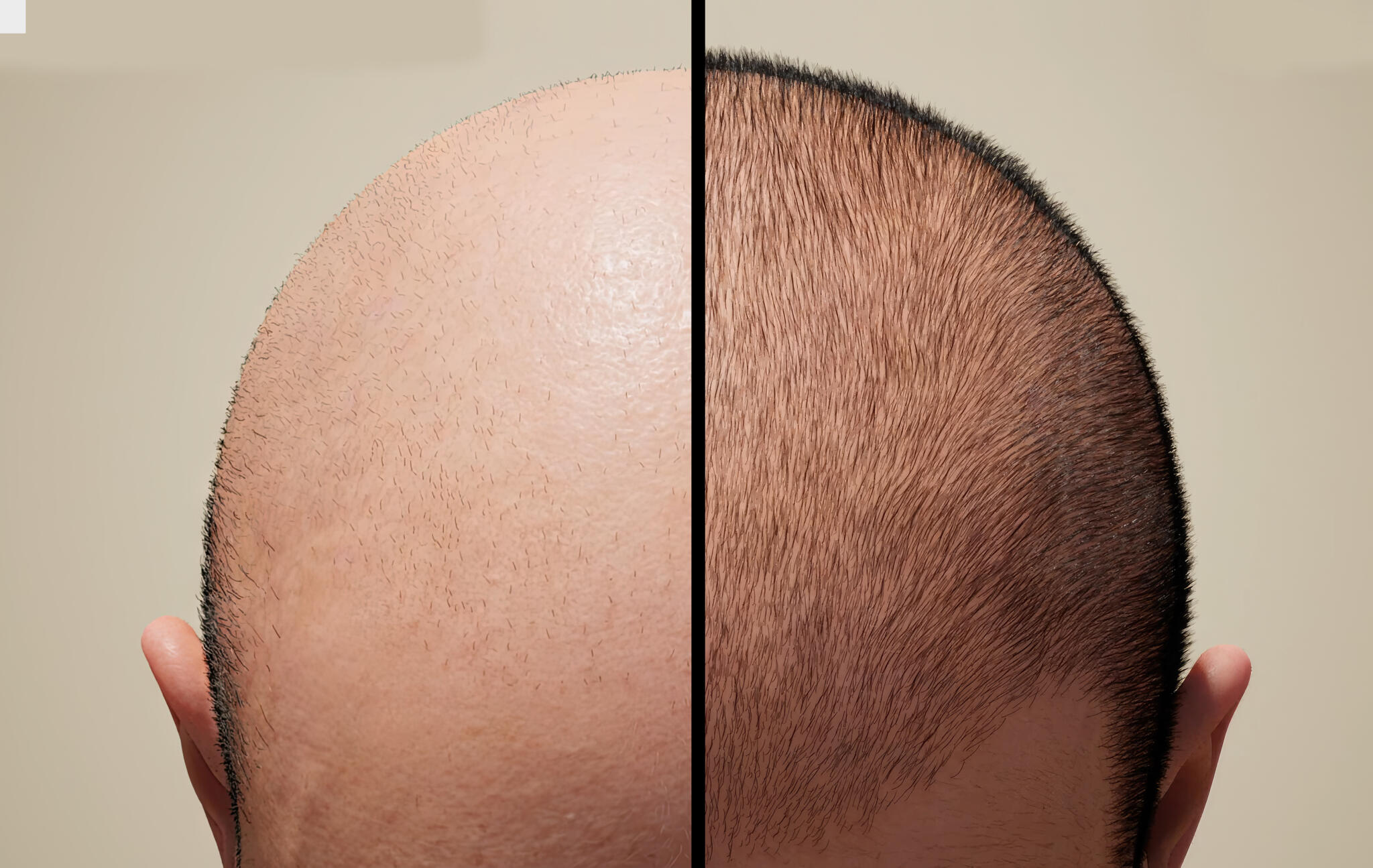Androgenic alopecia is a type of hair loss caused by the influence of hormones (androgens) on hair follicles. This condition is the most common cause of baldness in both men and women. In men, it typically manifests as a gradual thinning of hair at the crown and temples, leading to receding hairlines (commonly known as male pattern baldness). In women, androgenic alopecia leads to diffuse hair thinning, especially along the parting line.
The main contributing factors are genetic predisposition and the effects of male sex hormones such as testosterone. The condition negatively affects appearance and often leads to psychological discomfort. That’s why it’s crucial to consult a qualified trichologist at the first signs of hair loss.
Causes of Androgenic Alopecia in Women
Several factors may trigger androgenic hair loss in women:
- Heredity: The baldness gene can be inherited maternally. If there are cases of hair loss among female relatives, it’s important to stay vigilant and consult a doctor upon the first symptoms. Typically, signs begin to appear between ages 35–40. With preventive care, early onset can be delayed.
- Hormonal imbalance: Hair loss is closely linked to endocrine system function. An increase in dihydrotestosterone (DHT) levels negatively impacts follicles, causing damage. A hormonal imbalance can thus result in hair thinning.
- Pregnancy: This period brings major hormonal changes. Usually, hair returns to normal after childbirth and hormone stabilization. In some cases, however, treatment is necessary to stop hair loss.
- Internal organ diseases: Digestive and endocrine disorders often negatively affect hair health.
- Scalp conditions: While not direct causes, issues like folliculitis, fungal infections, and seborrheic dermatitis can accelerate hair loss or worsen follicle health.
- Chronic stress: Emotional strain impairs multiple bodily systems, including hair follicles.
- Medications: Long-term use of antibiotics, hormonal drugs, antidepressants, or oral contraceptives may harm follicles.
- Poor nutrition or restrictive diets: Can lead to deficiencies in essential nutrients and vitamins.
Symptoms of Androgenic Alopecia in Women
The process from initial hair thinning to visible bald spots can take time. Common signs include:
- Thinning and brittle hair, with noticeable loss of volume;
- Minimal hair loss at the temples – unlike men, women rarely develop bald patches in these areas;
- Changes in hair texture and quality.
Hair loss typically becomes most apparent along the parting line and crown. Initially, thin vellus hairs appear, making the scalp visible. These hairs eventually fall out too, forming bald spots. In rare cases, the condition may affect eyebrows or eyelashes. At the same time, unwanted hair may appear on the body.
Unlike in men, women with androgenic alopecia usually do not go completely bald but may experience significant thinning that impacts appearance and self-esteem.
If vitamin supplements and hair care products fail to help, it is essential to seek medical advice. The sooner the diagnosis and treatment begin, the higher the chance of preserving hair density and delaying visible signs of balding.
Diagnosis of Androgenic Alopecia in Women
At the first signs of hair loss, it is crucial to consult a trichologist. The specialist will examine the scalp and hair, focusing on thinning areas along the part and crown. A detailed medical history will be taken, including family history of alopecia, stress levels, chronic illnesses, hormonal changes (e.g., irregular menstruation or menopause), and medication use.
Diagnostic methods may include:
- Blood tests, including hormone panels;
- Trichoscopy – scalp examination using magnification to evaluate follicle condition and density;
- Phototrichogram – for assessing follicle size and hair growth rate;
- Consultation with specialists if underlying hormonal disorders are suspected.
Each diagnostic plan is personalized based on the individual’s needs.
Treatment of Androgenic Alopecia in Women
The goal of treatment is to stop the progression of hair loss and stimulate regrowth. Since the condition is chronic, long-term and comprehensive treatment is often required. Depending on the cause and stage, either conservative or surgical treatments may be recommended.
Conservative methods may include:
- Minoxidil: A widely approved topical treatment that boosts blood circulation and stimulates hair growth. It comes as a solution or foam and is applied directly to the scalp.
- Hormonal therapy: Anti-androgen medications may help women who are highly sensitive to androgens.
- Topical treatments: Include vitamin B complexes, zinc-based products, plant extract solutions, or topical anti-androgens. In cases of concurrent dandruff or seborrhea, medicated shampoos may be prescribed.
- Mesotherapy: Injections of vitamin and amino acid cocktails directly into the scalp, enhancing follicle nutrition and stimulating growth.
- PRP therapy (Platelet-Rich Plasma): Involves injecting the patient’s own platelet-enriched plasma into the scalp to promote regeneration and growth.
- Laser therapy: Low-level laser light improves circulation and stimulates follicles.
If conservative methods fail or hair loss is advanced, hair transplant surgery may be considered. Follicles are moved from denser areas to thinning spots. Transplanted hair typically starts to grow within 3–4 months.
A multi-faceted approach to treatment can significantly slow down the hair loss process and improve hair condition.
Prevention
Although androgenic alopecia is often driven by uncontrollable factors, early intervention and proper care can help reduce its severity.
Key preventive strategies:
- Hormonal monitoring: Regularly check hormone levels, especially if symptoms of imbalance are present (e.g., irregular periods or PCOS).
- Balanced nutrition: Eat foods rich in B vitamins, iron, zinc, biotin, and omega-3 fatty acids. Include fish, nuts, avocado, and leafy greens in your diet.
- Proper hair care: Avoid excessive styling, chemical treatments, and heat exposure.
- Scalp massage: Helps improve circulation to follicles.
- Stress management: Practices like yoga, meditation, physical activity, or hobbies can help reduce stress-related hair loss.
- Avoid harmful habits: Smoking and excessive alcohol intake can worsen hair health.
- Topical strengthening products: Use serums, masks, and Minoxidil (under medical supervision) to stimulate growth and reduce shedding.
Preventive measures can reduce the risk or severity of androgenic alopecia, especially in genetically predisposed individuals.
Prognosis
The outcome depends on several factors, including disease stage, timing of diagnosis, and treatment quality. Although androgenic alopecia is a chronic and progressive condition, it can often be managed effectively.
The earlier the problem is addressed, the better the chances of preserving hair density and appearance. Overall, the prognosis for women with androgenic alopecia is positive.
If you notice excessive hair loss or other symptoms, don’t wait – book a consultation at our clinic at a time convenient for you.
